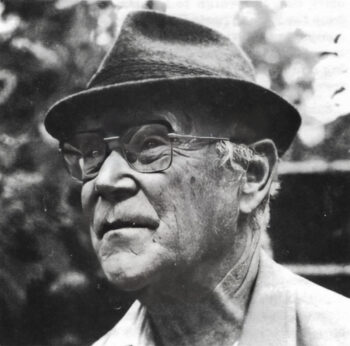Christophersen, Thies

Thies Christophersen (27 Jan. 1918 – 13. Feb. 1997) was a German farmer who was put in charge of breeding efforts of a Russian type of dandelion producing a liquid similar to a natural rubber, like caoutchouc. The experiments were conducted at the village of Rajsko near Auschwitz, and inmates of the Auschwitz Camp were deployed by Christophersen for that project.
In a brochure first published in Germany in 1973, he related his wartime experiences as a German soldier deployed at Auschwitz. “During the time I was in Auschwitz, I did not notice the slightest evidence of mass gassings,” he wrote in his brochure Die Auschwitz-Lüge (The Auschwitz Lie). Christophersen’s first-hand account was a major factor in the growth and development of Holocaust skepticism. For this reason, the brochure was soon banned in Germany, but new editions were published abroad and in other languages.
Until the outbreak of war in Europe, Christophersen had worked as a farmer in Schleswig, northern Germany. Called to military service, he was badly wounded in 1940 while serving in the Western Campaign. After recuperating and undergoing some specialized agricultural training, he was assigned as a special leader to a research center in German-occupied Ukraine. In the face of Soviet military advances, the center was transferred to the Rajsko labor camp, a satellite camp of Auschwitz. During the period he lived and worked there – from January to December 1944 – Christophersen was responsible for the daily work of inmate laborers. The young private supervised about 300 workers, many of them Jewish, of whom 200 were women from the Rajsko Camp, and 100 were men from the nearby Auschwitz-Birkenau Camp. On a number of occasions, he visited the Birkenau Camp where, it is alleged, hundreds of thousands of Jews were systematically gassed to death in May-July 1944. Although he knew of Birkenau’s crematoria, it wasn’t until after the war that he first heard anything of “gas-chamber” killings or mass exterminations.
In March 1988, he testified for the defense during the so-called Second Zündel Trial. Due to ongoing persecution and prosecution for his views on Auschwitz, he left Germany and resided temporarily in Denmark, Belgium and Switzerland.

You need to be a registered user, logged into your account, and your comment must comply with our Acceptable Use Policy, for your comment to get published. (Click here to log in or register.)